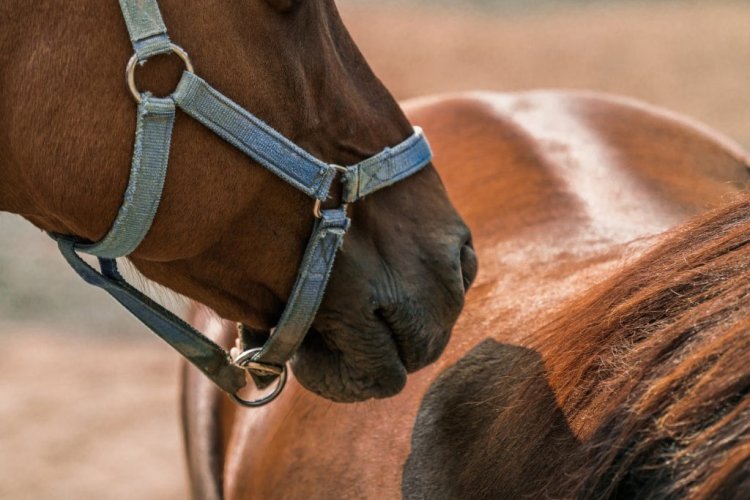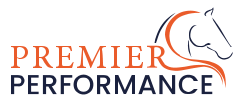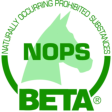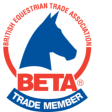in basket
TOP OFFER - SUMMER20 - 20% OFF and 4 FREE seasonal products!
Understanding Your Horse’s Behaviour: Part 1

Introduction
Your horse’s behaviour is the product of a complex interaction of his/her genes and their environment. Similar to all mammals, genetics predispose the horse to behave in a certain way, whilst the actual behaviour is the result of a combination of that genetic predisposition (nature) and the behaviour that has been learned (nurture) in the environment. This is where the phrase “nature or nurture” comes from.
Behaviour can be defined as the horse’s response to its environment. To be able to manage and train our horses appropriately, it’s important to understand and appreciate horse behaviour and how that has evolved over many years. This helps avoid the development of behaviour problems that may result from inadequate management routines and a lack of understanding of how the horse ‘perceives’ their world.
Horses are herd and prey animals
In their natural environment, horses are herd animals. This is because they are also known as prey animals and being in a herd is life strategy beneficial for any prey animal for many reasons. Firstly, it’s safety in numbers; being in a herd means that there is always a member, or members, looking out for the group to ensure their safety whilst others rest or sleep. If one member of the herd notices a predator they will share this with the rest of the group. Their instinctive response to what is perceived to be a threatening situation is to run and if they can’t run then they will defend themselves – something that we often refer to as “flight or fight”. Running from danger is their means of survival and if one horse runs, they all do because they instinctively know to do this. Instinctive behaviours are those that are present from birth and are not behaviours that are learned by the horse. You will no doubt recall situations where if one horse gets a fright and runs off, the others follow. Horses are incredibly perceptive to detect any danger, a horse can spot something that we cannot see, and we often put this down to “spookiness” or “bad behaviour”. Horses also respond very quickly because, as a prey animal, they must react instantly to a predator for their survival. I’m sure many of us have memories of being at one side of the arena and then at the other within a split second. Other types of instinctive behaviours include, standing, sucking and vocalisation (neighing).
Horses also have a very good memory for places or situations that were frightening or painful; this is an aspect of being a prey animal that was necessary for their survival. Horses are highly social animals and will not voluntarily isolate themselves from other horses and are more comfortable when they can maintain visual contact with other horses. Body language is primarily used as the main form of communication within the herd, but they will also use vocalisation and touch (for example, neighing and nuzzling). The body language that they use can often be very subtle to the human eye, especially the untrained handler. Naturally, horses are also very good at reading body language and will pick up on our body language during handling/training. Horses have their own personal space and develop close relationships with certain others as well as having preferred grooming partners. As herd animals, having a hierarchy, or “pecking order”, is required to reduce fighting in the group and increase herd solidarity. In the wild this hierarchy remains relatively stable and anyone who has seen a new horse being turned out in the field will know the effect this can have on the herd.
Horses are herbivores and locomotory
In the wild, horses are nomadic animals in that they will roam over several kilometres per day grazing little and often as they go, which is why horses are known as grazing animals and “trickle-eaters”. Horses need to move about, in their natural environment horses will walk steadily whilst grazing, taking a couple of bites and moving on. This movement also helps their circulation as well as maintaining their hooves, which would not be sufficiently worn down otherwise. Thus, movement (or locomotory) behaviour is an integral part of a horse’s life and they are instinctively motivated to move.
Horses are herbivores and when observed in their natural environment they have been seen to eat plant materials between 16 and 20 hours per day, which means they spend more time eating than doing anything else; in fact the way a horse eats is part of what makes a horse a horse. Consequently, horses are instinctively motivated to chew, wild horses rarely fast for more than a couple of hours at a time. Horses will also naturally select feedstuffs that are high in fibre and low in nutritional quality. This is because a horse’s gastrointestinal tract is designed to process large quantities of fibre on an almost continual basis. Horses make use of this fibre as an energy source through microbial fermentation that takes place in their hindgut.
Microbes in the hindgut breakdown the fibre to produce volatile fatty acids (VFAs), which are absorbed across the gut wall and used as an energy source for the animal. The horse’s digestive tract is not designed to cope with high amounts of feedstuffs that are low in fibre and high in starch; for example, feeds containing cereal grains (oats, barley maize). This is because the horse’s diet in the wild would not contain significant amount of starch and therefore the horse has not developed the capacity to digest high levels of starch.
Summary
- As herd animals, horses require social interaction
- As prey animals, horses will run from danger
- As locomotory animals, they need to be able to move around
- As herbivores, they require a diet high-in fibre and low in starch (where possible)
Article written for Premier Performance by Professor Jo-Anne Murray.






